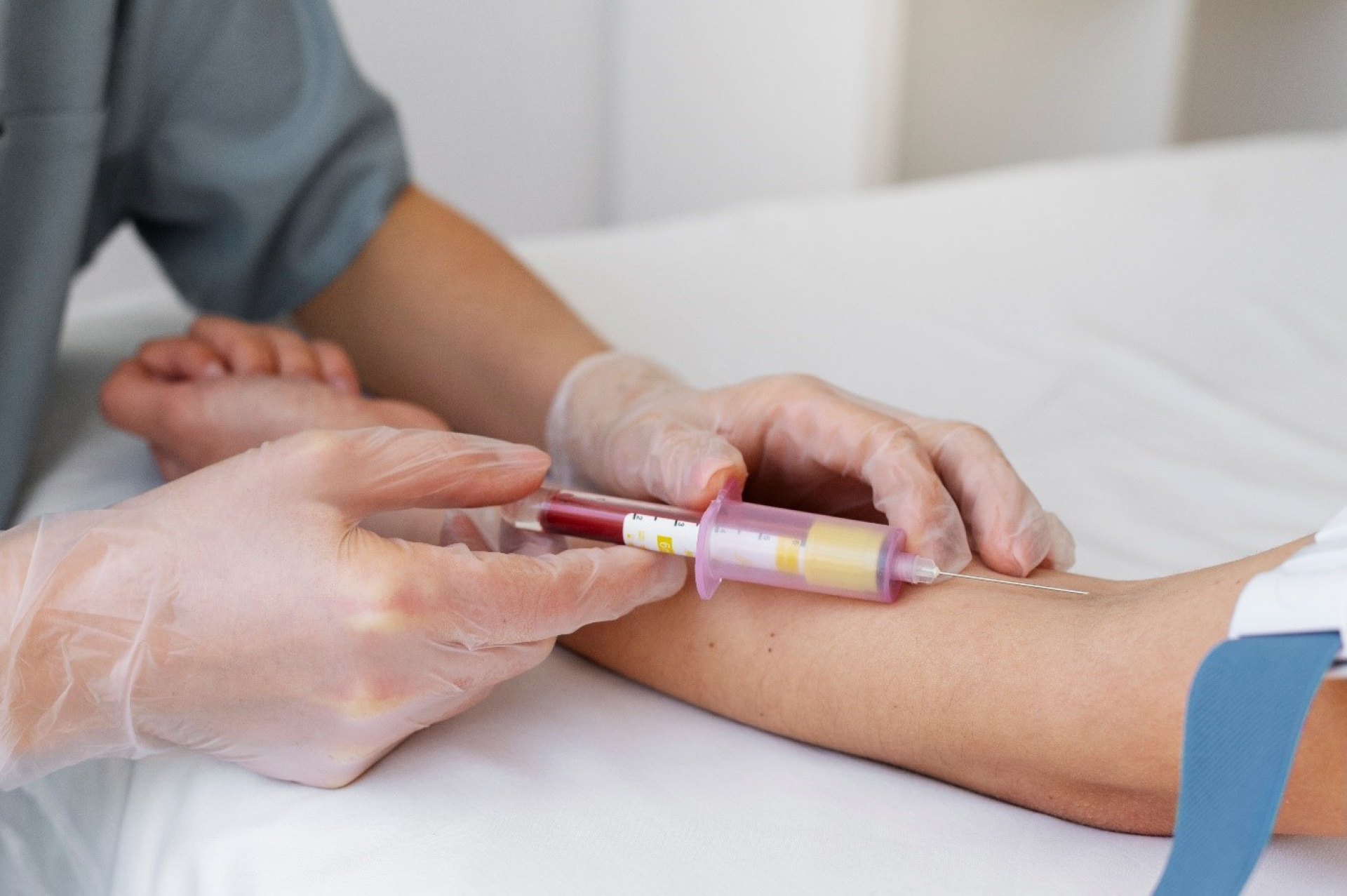Typhoid fever, also known as enteric fever, is an illness caused by the Salmonella typhi (S. typhi) bacterium that infects the small intestines. It is commonly found in parts of the world where there is reduced access to clean water, contaminated food, and poor sanitation conditions. Children are at high risk of developing typhoid fever because of their weak immune systems, but they experience milder symptoms compared to adults.
How does typhoid fever spread?
Typhoid fever is a contagious disease and can be easily spread through food or water contaminated with S. typhi. The spread of typhoid infection takes place when an infected person neglects to wash their hands after using the restroom and then touches the food or water that others consume. Improperly cooked food or the consumption of raw, unpeeled vegetables and fruits can also facilitate the transmission of the disease. Moreover, the disease can be transmitted when wastewater combines with drinking water or food, or when water is not treated effectively to eliminate germs.
Symptoms
The symptoms of typhoid fever are seen after 1 to 3 weeks following exposure to the S.typhi bacterium.
Early illness symptoms include:
- Continuous high fever
- Chills in the body
- Headache
- Stomachache
- Muscle pain
- Nausea
- Vomiting
- Diarrhea
- Constipation
- Loss of appetite
- Rashes on chest or stomach
- Fatigue
Later illness symptoms start after a few weeks and cause issues in the intestines. These include:
- Stomachache
- Swelling of stomach
- Sepsis – infection spreading throughout the body caused by gut bacteria
In serious conditions, people may experience symptoms such as:
- Confusion
- Lack of attention
Risk factors
Typhoid fever affects millions of people each year and is common in African and South Asian countries. People from other parts of the world become infected with the disease as a result of visiting areas where there is an outbreak of the illness.
An increased risk of getting affected with typhoid fever can be observed in those who:
- Are in close contact with an infected person
- Handle and work with typhi bacteria
- Eat or drink contaminated food while traveling to areas where typhoid fever is prevalent.
Stages of typhoid fever
There are four stages in which we can gradually develop the symptoms of typhoid fever. These include:
Stage 1: During this stage, individuals will observe a gradual increase in high fever as the temperature rises over a period of several days, known as stepwise. This typically manifests between 4 to 14 days following an infection with S.typhi. At this stage, the bacterium is able to move freely throughout the bloodstream.
Stage 2: In this stage, the person experiences the symptoms of stomachache, diarrhea, or constipation. The person may also get rashes or pink spots on the body. The bacterium starts multiplying during this stage.
Stage 3: In this stage, the symptoms get severe causing complications like internal bleeding and inflammation of the brain as the bacteria causes severe damage to the body if not treated with antibiotics.
Stage 4: In this stage, the symptoms fade away as temperatures come down and the person starts to recover. The bacteria lives in the gallbladder in an asymptomatic stage, and the person can still be contagious for the disease.
Diagnosis
Following a physical examination, your healthcare provider will assess your symptoms and inquire about your travel history. In order to confirm a diagnosis of typhoid fever, a sample of blood, urine, stool, or bone marrow will be analyzed in a laboratory to detect the presence of S.typhi bacteria.
Widal test
Widal test also known as typhoid test or enteric fever test is a type of blood test used to identify typhoid and paratyphoid fever. The Widal test detects two types of antibodies in a blood sample: anti-O and anti-H. The levels of these antibodies increase during infection.
Interpretation of results
If the person has antibodies of S.typhi, they form agglutination(clumping) with the antigens in the reagent. There is a maximum dilution of antibody titre in the serum sample using the Widal test antigen suspension that results in clear agglutination.
Normal range
There is no standard normal range for the Widal test.
A positive test result shows that the person developed antibodies against S.typhi. A titre of 1:80 or higher for O agglutination and 1:160 or higher for H agglutination is considered positive for typhoid fever.
A negative test result shows that there was no agglutination (clumping), which means that there are no clinically significant levels of antibodies found in the person's serum.
Treatment
The use of antibiotics is the primary approach in treating typhoid fever. In order to optimize the treatment outcomes, a combination of antibiotic treatments may be utilized for select bacterial types. In cases of severe illness caused by typhoid fever, steroids may be recommended as a viable alternative.
Preventive measures
Vaccination is the best practice to reduce the risk of typhoid fever. Other preventive measures include:
- Safe food handling practices
- Wash hands with soap
- Wash the surfaces and utensils before and after use
- Eat well-cooked and packaged foods
- Avoid drinking untreated water
Typhoid fever is an illness caused by the Salmonella typhi bacterium that exhibits symptoms like high fever, stomach infections, stomachache, diarrhea, or constipation. It is a contagious disease that can be effectively treated with antibiotics. If left untreated it can cause severe damage to different organs of the body. A Widal test is used in the diagnosis of typhoid fever in which the antigens present in the reagent react with the antibodies present in the blood or serum forming agglutination (clumping). Vaccinating for typhoid fever is the best way to prevent the disease.


